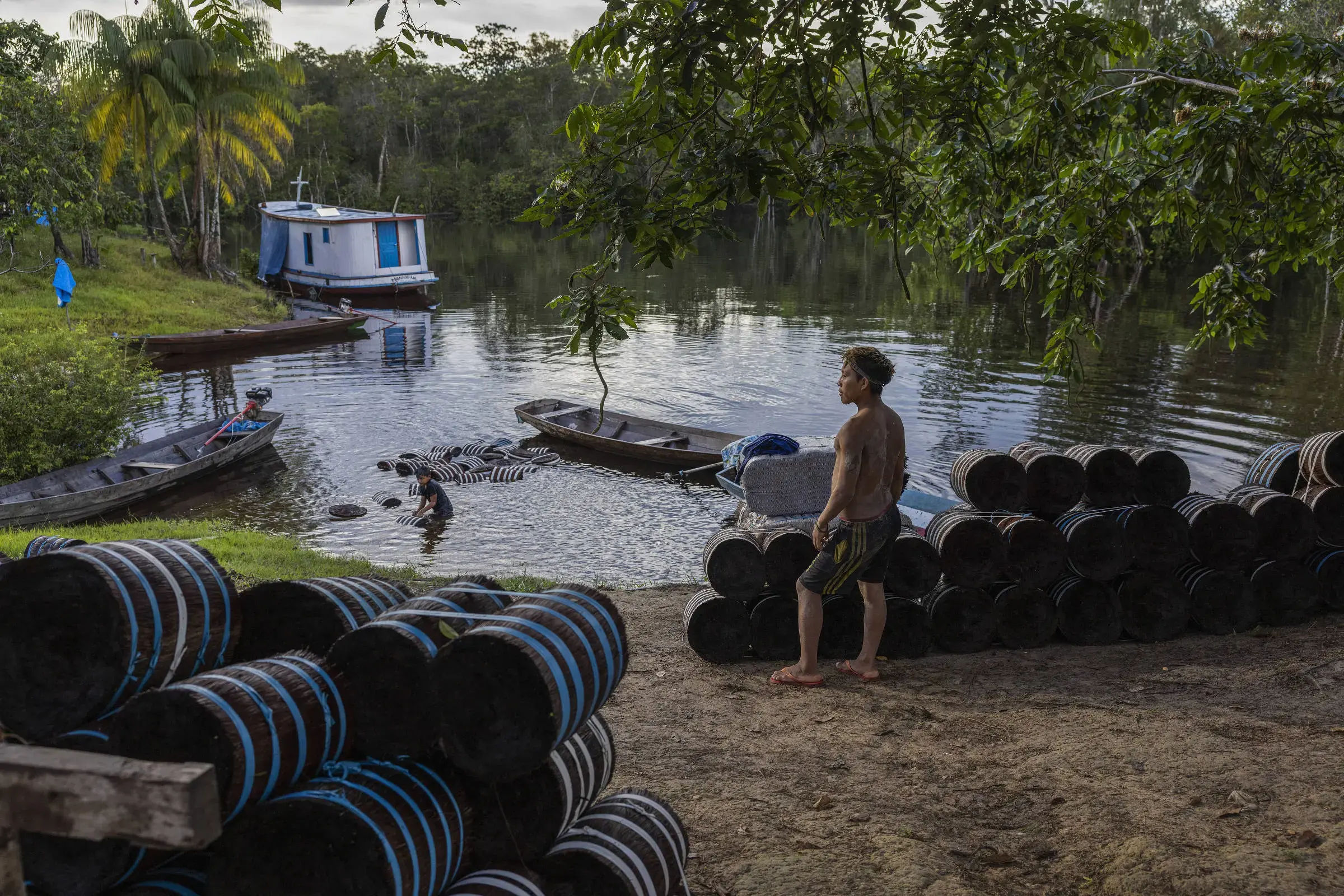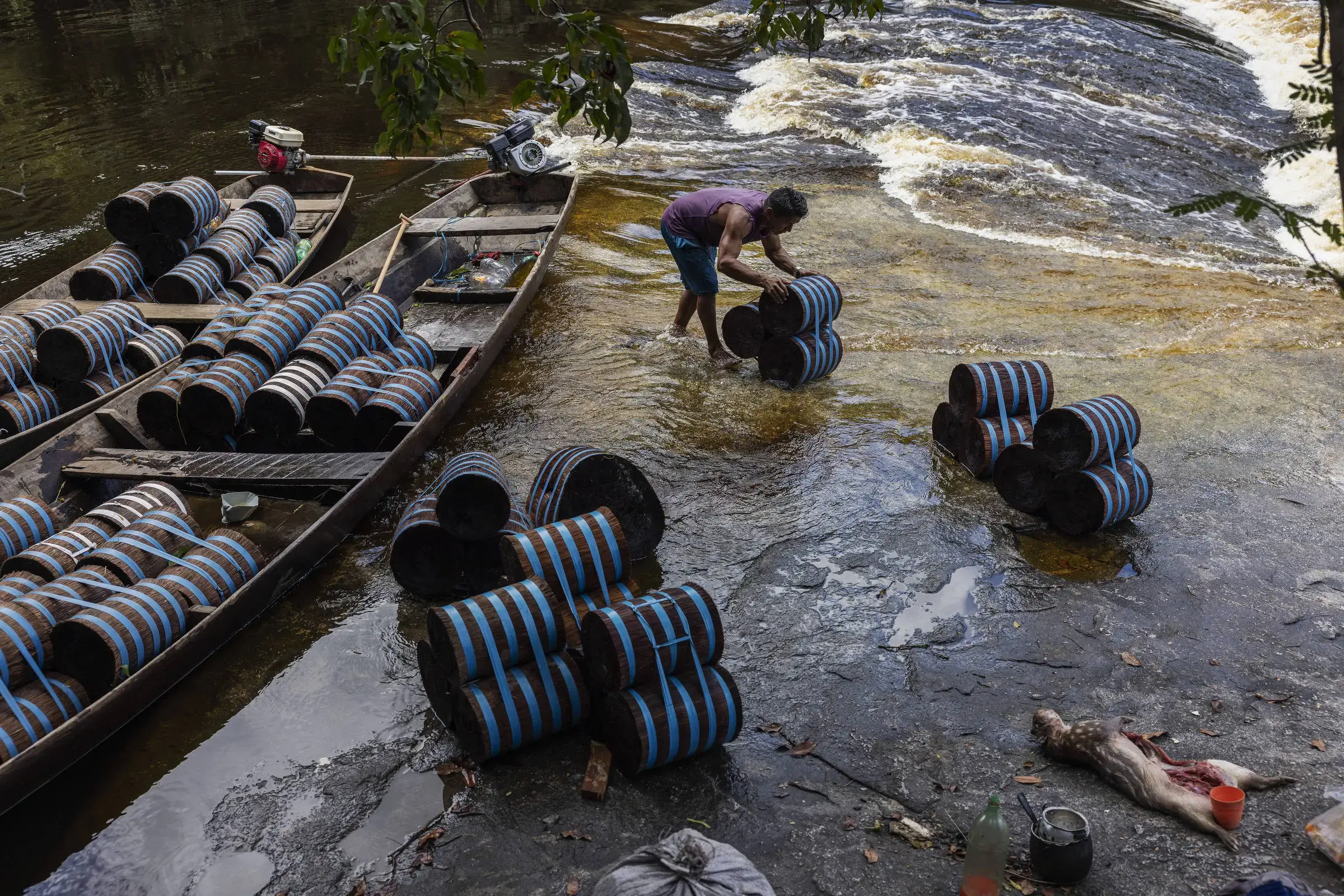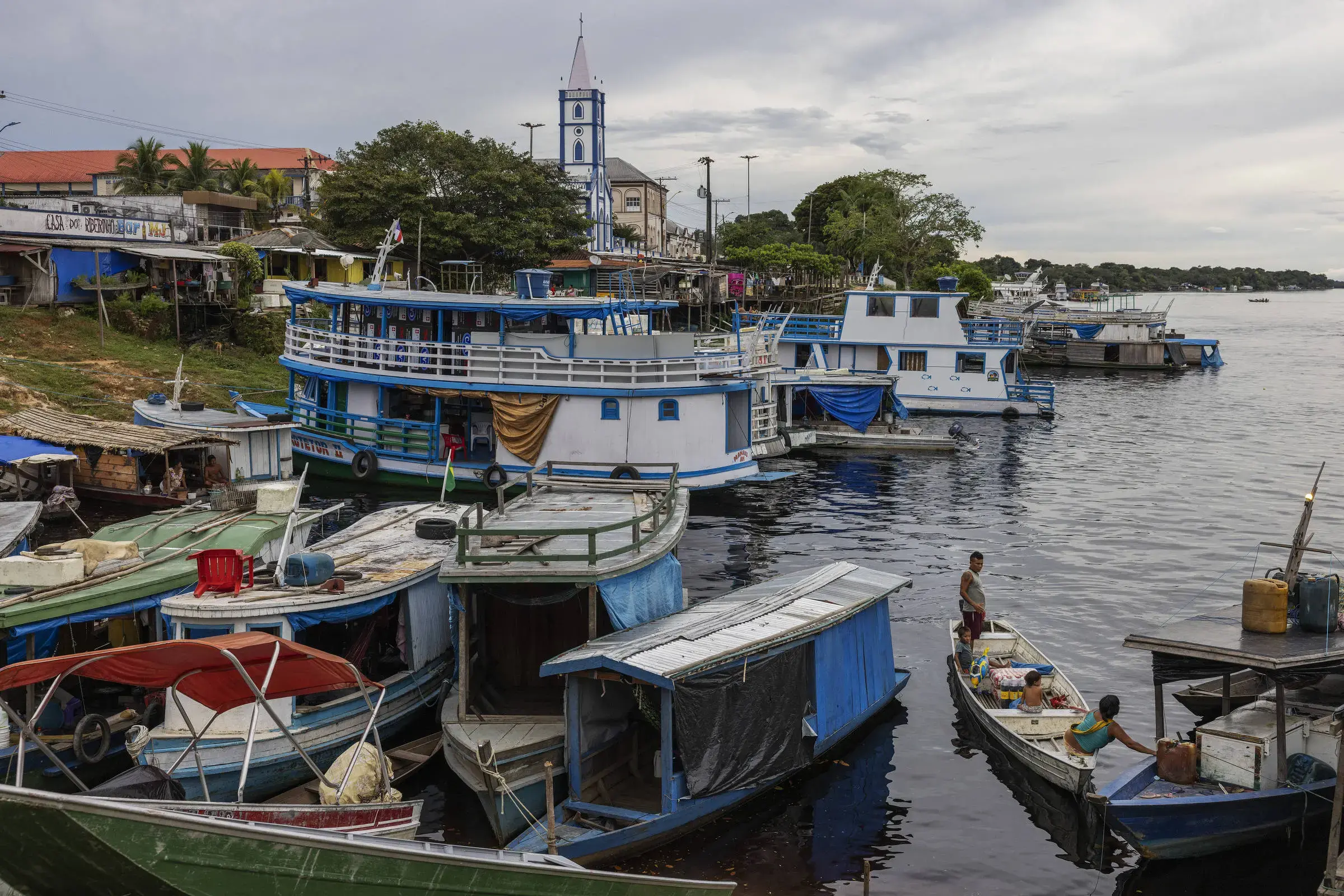This story excerpt was translated from Portuguese. To read the original story in full, visit Folha de S.Paulo. You may also view the original story on the Rainforest Journalism Fund website. Our website is available in English, Spanish, bahasa Indonesia, French, and Portuguese.
Folha goes to the mid-Negro River region and sees the increasing presence of Indigenous people extracting the fiber used in brooms.
The extraction of piassaba in the region of the middle Negro River, through a rudimentary model of indebtedness of workers, includes the exploitation of Yanomami living in villages on the Indigenous land on the Amazon side.
The Yanomami land is the largest in Brazil. The territory covers 9.6 million hectares and stretches across Roraima and Amazonas.
On the Roraima side, where there are 17,000 Yanomami, the Indigenous people are experiencing a humanitarian crisis.

The advance of illegal mining and 20,000 invaders, stimulated by the Jair Bolsonaro government (2018-2022), has caused an explosion of malaria cases and diseases associated with hunger, such as severe malnutrition, acute diarrhea, and pneumonia. On January 20, the government of current President Luiz Inácio Lula da Silva declared a state of health emergency in the territory.
The other side of the Indigenous land, in the Amazon, is less populated: There are 10,300 Yanomami. Some of them have been undergoing a hidden process of exploitation, with no sign of reaction from the federal government.





